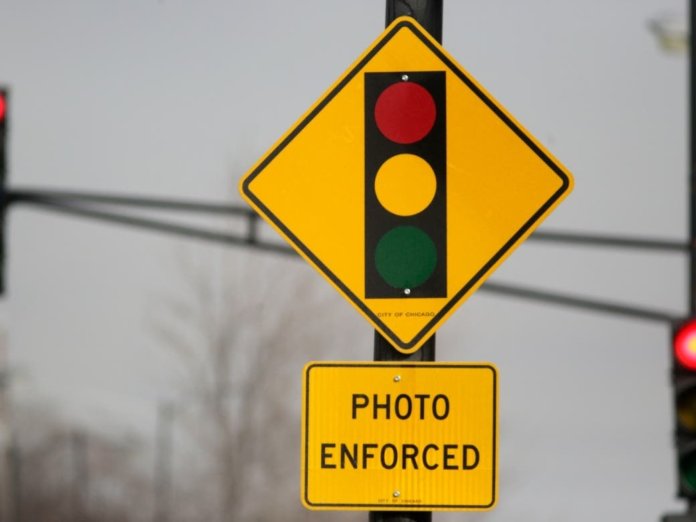Politics & Government City Of Minneapolis Renews Push To Implement Speed Cameras Program The city of Minneapolis and the Minnesota Department of Transportation are both interested in the technology.
– In this Tuesday, Feb. 10, 2015 file photo, a sign warns motorists of the presence of a red light camera in Chicago. Texas Gov. Greg Abbott signed a law Saturday, June 1, 2019 that bans red-light traffic cameras in Texas. (AP Photo/M. Spencer Green, File)
MINNEAPOLIS — More than 16 years after the Minnesota Supreme Court put the kibosh on Minneapolis’ “photo cop” program, the technology might be making a comeback.
Speed cameras play a major role in the city of Minneapolis’ plan to end traffic deaths and severe injuries by 2027, but only if the Minnesota Legislature allows for it. The Minnesota Department of Transporation is also interested in the technology.
Contrary to popular belief, speed cameras and red light cameras are not unconstitutional in Minnesota. However, in 2007, the Minnesota Supreme Court ruled that Minneapolis’ Photo Co program violated a state law that requires all Minnesota traffic regulations to be uniform. A bill introduced in the Minnesota Senate by five Democrats last year would have authorized state and local authorities to use speed safety cameras for traffic enforcement.
Minneapolis officials hope to get the bill to the finish line this session, which begins Feb. 12. Under Senate File 2026, the owner or lessee of a vehicle that is caught going above the speed limit by a camera system is guilty of a petty misdemeanor and must pay a fine of up to $80.
Exceptions include if the vehicle was stolen at the time of the violation. Police cars, fire trucks, ambulances, and other authorized emergency vehicles are exempted if they are “in the performance of official duties at the time of the violation.” Why speed cameras?
A 2022 MnDOT report found that crashes in work zones are increasing statewide, and “simply lowering the posted speeds will not change driver behavior, because drivers will reduce speeds only if they perceive a need to do so.” Between 2018 and 2020, Minnesota recorded 7,403 work zone crashes. Of those, 122 of the crashes caused a death or a serious injury to either a worker, driver, or someone else, authorities said. And Minneapolis officials say that between 2017 and 2021, an average of 150 people each year suffered life-changing injuries or were killed in traffic crashes on the city’s streets. In 2021, speeding was a factor in 65 percent of fatal crashes, according to officials. The Federal Highway Administration says speed cameras can reduce injury crashes by up to 47 percent on busy streets. The National Highway Traffic Safety Administration gives automated enforcement its highest effectiveness rating. Speed cameras also eliminate the need for “officer interaction,” a Minneapolis report noted. The city said it will prioritize equity and privacy in any speed camera program it implements.
Nineteen states and Washington D.C. use cameras to reduce speeding. The technology is deployed through: “Fixed units,” or one stationary camera looking at one location
“Point-to-Point” units, where multiple cameras are used to capture average speed over a certain distance
“Mobile units,” or portable cameras mounted in a car or trailer Critics of camera enforcement technology cite privacy concerns, particularly around the photographs taken for evidence. Opponents also say the cameras can cause people to suddenly slam on the brakes when they spot one at an intersection, potentially causing a crash.




